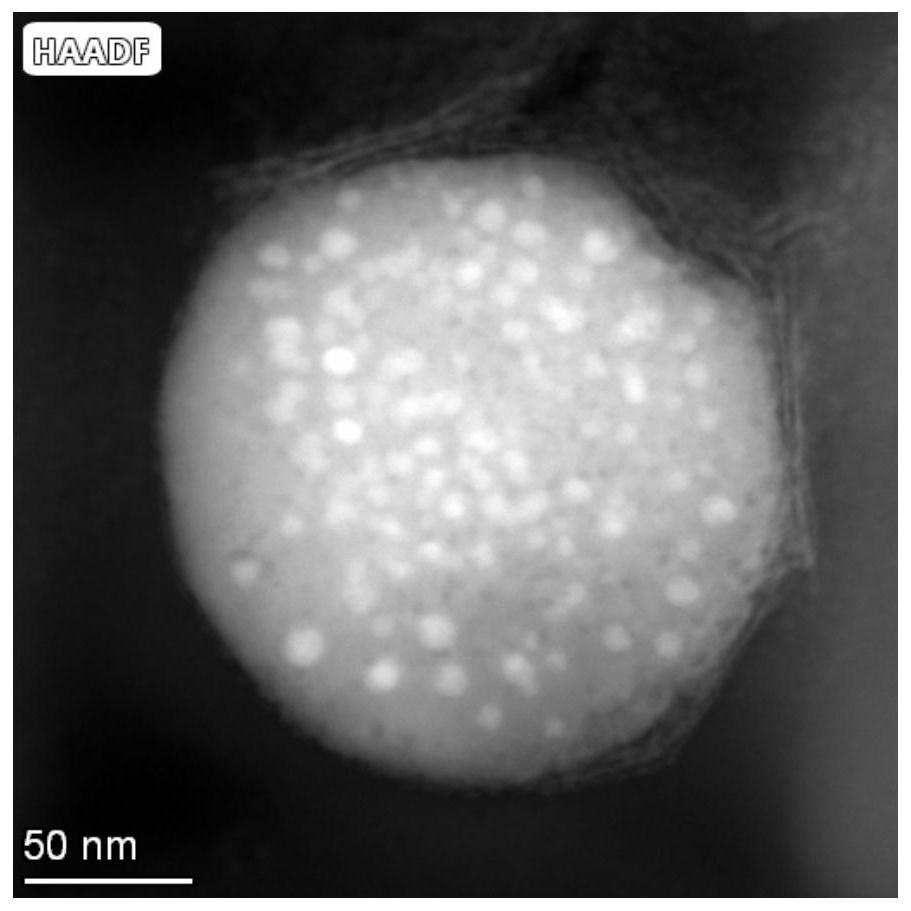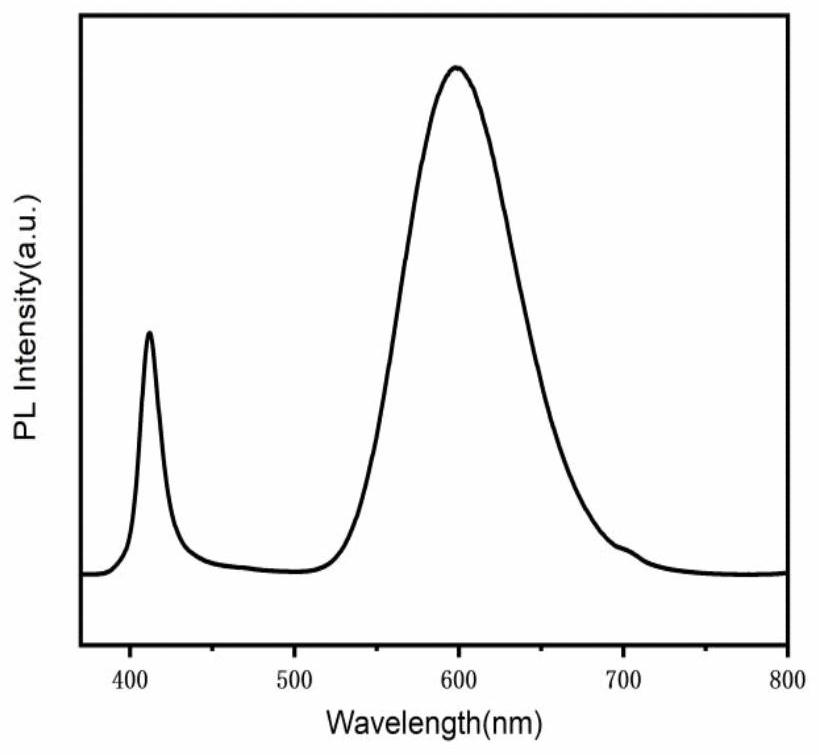Manganese-doped cesium-lead-chlorine illuminant based on silicon dioxide coating and preparation method and application thereof
A silicon dioxide and manganese doping technology, applied in chemical instruments and methods, applications, luminescent materials, etc., can solve problems such as poor stability, achieve low cost, low experimental environment requirements, improve stability and photoluminescence quantum Yield effect
- Summary
- Abstract
- Description
- Claims
- Application Information
AI Technical Summary
Problems solved by technology
Method used
Image
Examples
Embodiment 1
[0024] (1) Weigh 0.19g of cesium carbonate and add it to a 50ml three-neck flask, then add 10ml of 1-octadecene and 1.25ml of oleic acid solution, and heat to 150°C under a nitrogen atmosphere at a heating rate of 5°C / min until The cesium carbonate solid is completely dissolved to obtain solution a;
[0025] (2) Accurately weigh 0.052g of lead chloride and 0.024g of manganese chloride and add them to a 25ml three-necked flask, then add 10ml of 1-octadecene solution, 1.5ml of oleic acid, 1.5ml of oleylamine and 1ml of tri-n-octyl phosphine. Heating to 190°C under a nitrogen atmosphere at a heating rate of 5°C / min until the reactants are dissolved to obtain solution b;
[0026] (3) Use a disposable needle to measure 0.7ml of the solution a obtained in step (1) and quickly inject it into the solution b obtained in step (2), react for 30 seconds and then take a water bath to room temperature; the reaction product is washed, centrifuged, and vacuum-dried to obtain mn 2+ Doped pe...
Embodiment 2
[0029] (1) Weigh 0.19g of cesium carbonate and add it to a 50ml three-neck flask, then add 10ml of 1-octadecene and 1.25ml of oleic acid solution, and heat to 150°C under a nitrogen atmosphere at a heating rate of 5°C / min until The cesium carbonate solid is completely dissolved to obtain solution a;
[0030] (2) Accurately weigh 0.052g of lead chloride and 0.024g of manganese chloride and add them to a 25ml three-necked flask, then add 10ml of 1-octadecene solution, 1.5ml of oleic acid, 1.5ml of oleylamine and 1ml of tri-n-octyl Phosphine is heated to 190°C under a nitrogen atmosphere at a heating rate of 5°C / min until the reactants are dissolved to obtain solution b;
[0031] (3) Use a disposable needle to measure 0.7ml of the solution a obtained in step (1) and quickly inject it into the solution b obtained in step (2), react for 30 seconds and then take a water bath to room temperature; the reaction product is washed, centrifuged, and vacuum-dried to obtain mn 2+ Doped pe...
Embodiment 3
[0034] (1) Weigh 0.19g of cesium carbonate and add it to a 50ml three-neck flask, then add 10ml of 1-octadecene and 1.25ml of oleic acid solution, and heat to 150°C under a nitrogen atmosphere at a heating rate of 5°C / min until The cesium carbonate solid is completely dissolved to obtain solution a;
[0035] (2) Accurately weigh 0.052g of lead chloride and 0.024g of manganese chloride and add them to a 25ml three-necked flask, then add 10ml of 1-octadecene solution, 1.5ml of oleic acid, 1.5ml of oleylamine and 1ml of tri-n-octyl Phosphine is heated to 190°C under a nitrogen atmosphere at a heating rate of 5°C / min until the reactants are dissolved to obtain solution b;
[0036] (3) Use a disposable needle to measure 0.7ml of the solution a obtained in step (1) and quickly inject it into the solution b obtained in step (2), react for 30 seconds and then take a water bath to room temperature; the reaction product is washed, centrifuged, and vacuum-dried to obtain mn 2+ Doped pero...
PUM
 Login to View More
Login to View More Abstract
Description
Claims
Application Information
 Login to View More
Login to View More - Generate Ideas
- Intellectual Property
- Life Sciences
- Materials
- Tech Scout
- Unparalleled Data Quality
- Higher Quality Content
- 60% Fewer Hallucinations
Browse by: Latest US Patents, China's latest patents, Technical Efficacy Thesaurus, Application Domain, Technology Topic, Popular Technical Reports.
© 2025 PatSnap. All rights reserved.Legal|Privacy policy|Modern Slavery Act Transparency Statement|Sitemap|About US| Contact US: help@patsnap.com


